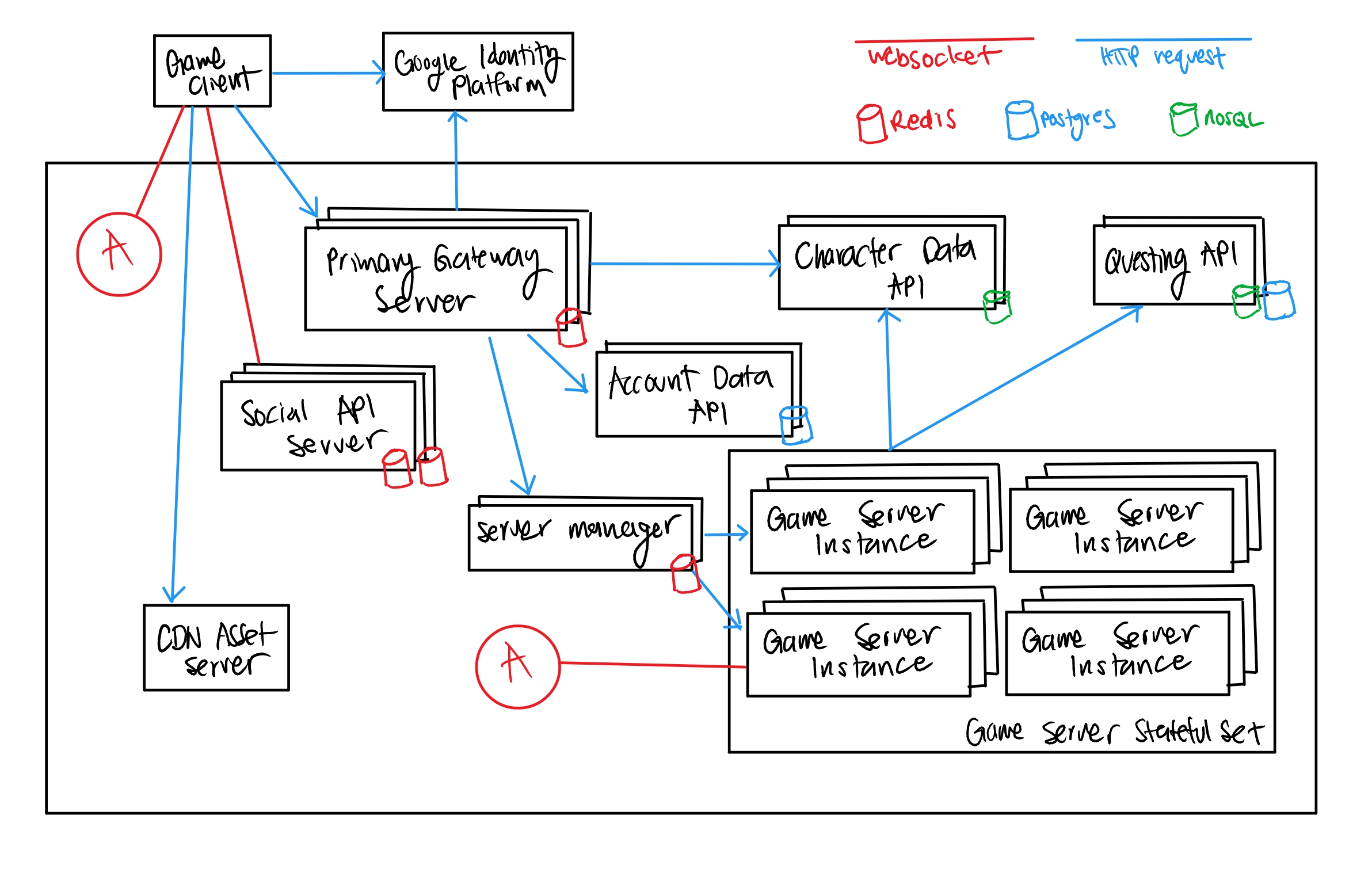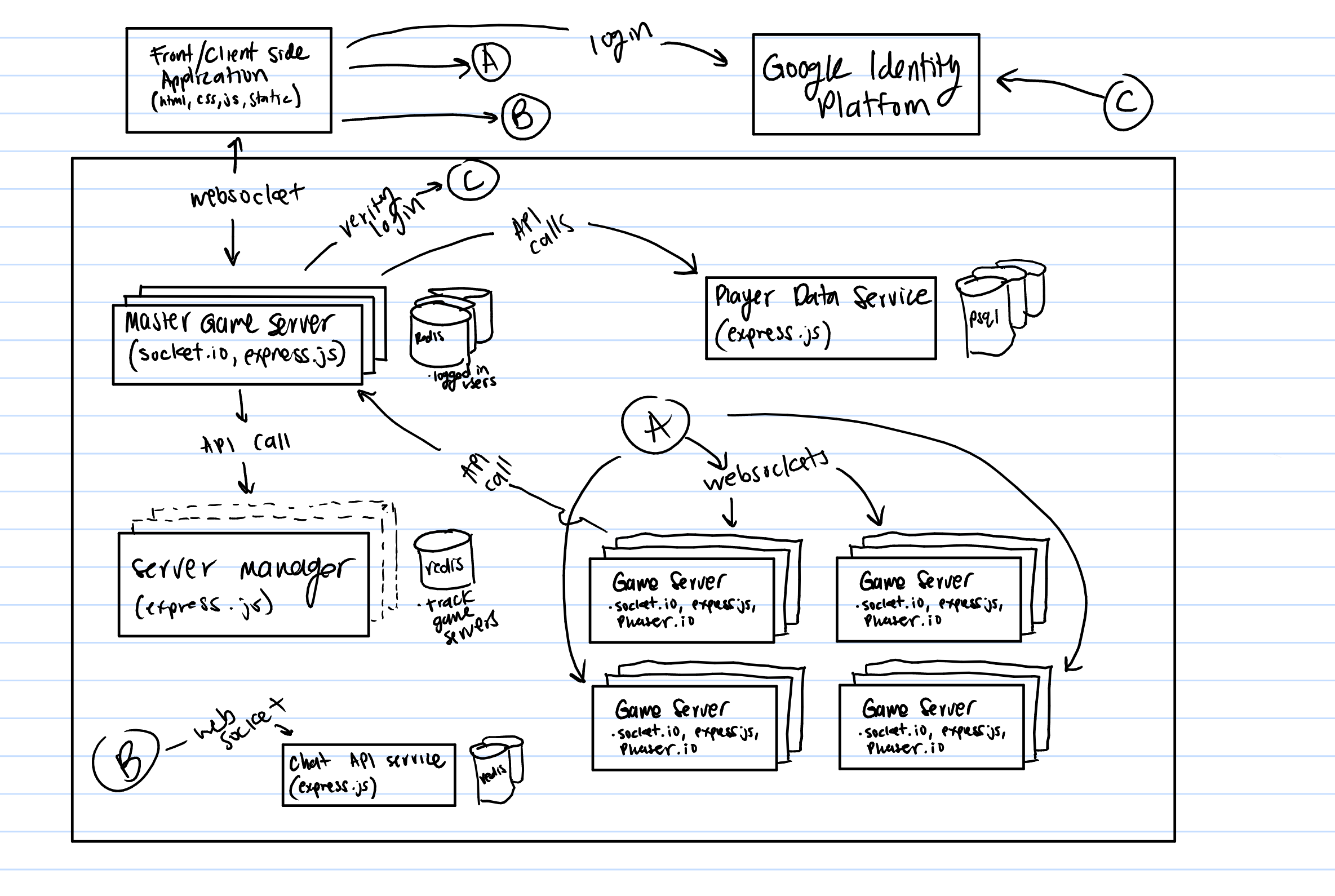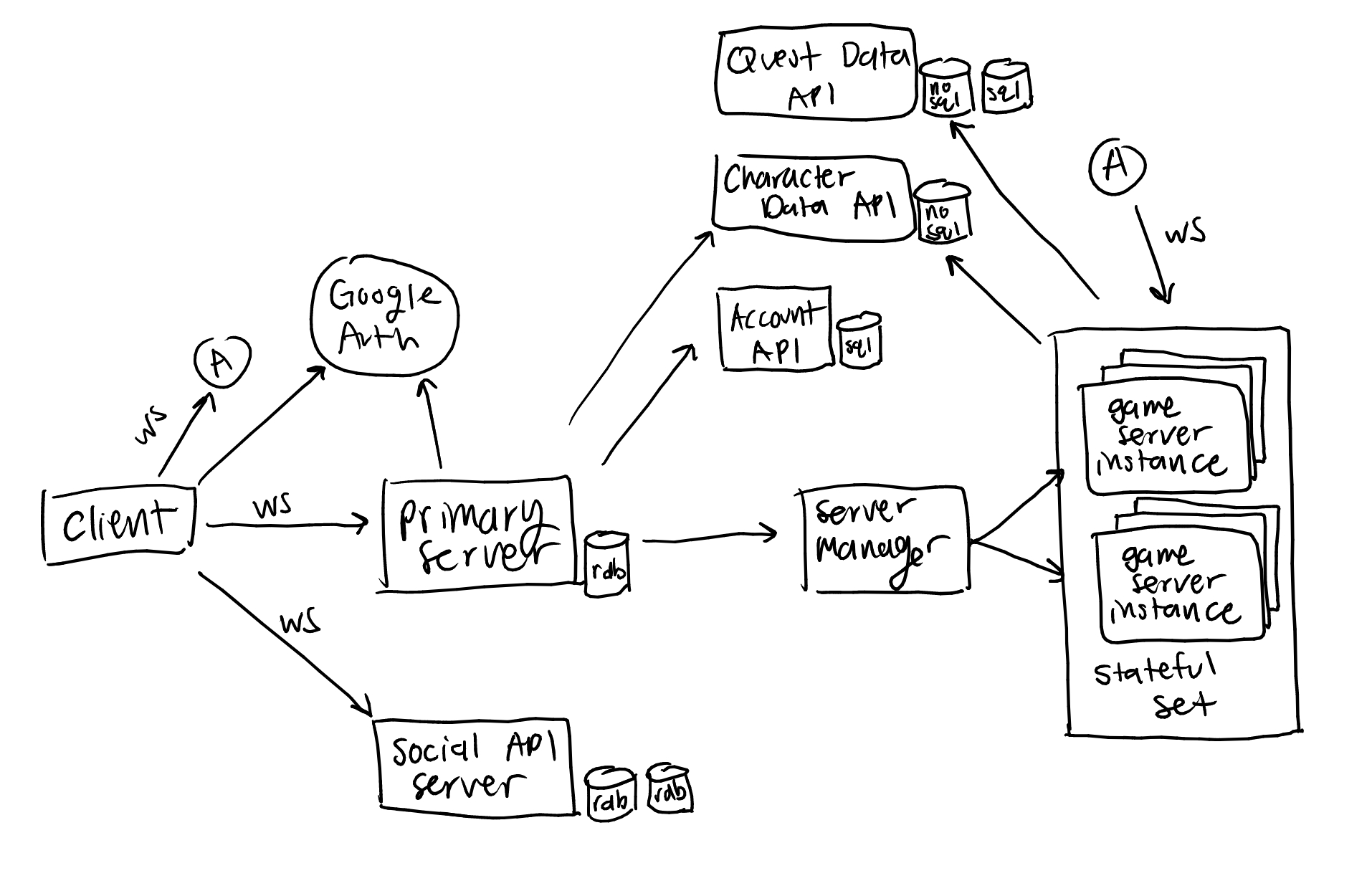General Architecture
This document describes the mmorpg’s high-level architecture.
Architectural Overview
- the server manager handles creating and deleting game server instances and assigning them to handle respective in-game map areas as needed in order to distribute the mmorpg over several pods
- all the supplementary features such as chat api, social services, etc. will be handled as microservices
- a primary gateway server will handle the user authentication using the Google Idenity Platform and keep record of active user sessions
Components and Interfaces
- Game Client
- Primary Gateway Server
- Server Manager
- Game Server Instances
- Social API Service
- Account Data API
- Character Data API
- Questing API
- stores all Quest information
- CDN Asset-Server
Design Considerations:
- I wanted the architecture to follow a microservices pattern for serveral reasons
- easy for horizonatlly scaling individual features/aspects of the overall project
- easier to understand and read higher level/complicated architecture if its actually broken down into smaller microservices
- we might want separate services to be accessible outside of the context of the actual game
- ex: displaying character data and leaderboards on the landing page website outside of a running game server
- will be easier to add newer features to the project in the long term
- allows for instancing individual areas of the in-game world by separating them into different pods so the entire world is handled by one running process/CPU
- resource optimization vs performance optimization vs network/bandwidth optimiztion
- will also make it easier to create instanced areas and dungeons as a feature to the mmo
Revisions
Revision 1
Revision 2
Revision 3
Notes/Thoughts:
- I’m thinking of adding a Map Data API, so Game Server Instances don’t need to have a copy of ALL other Map details despite only being charge of one Map area. The Server Manager would just send a Map ID to an idle Game Server, and then the Game Server would send a request to the Map Data API and set itself up based on the response.



